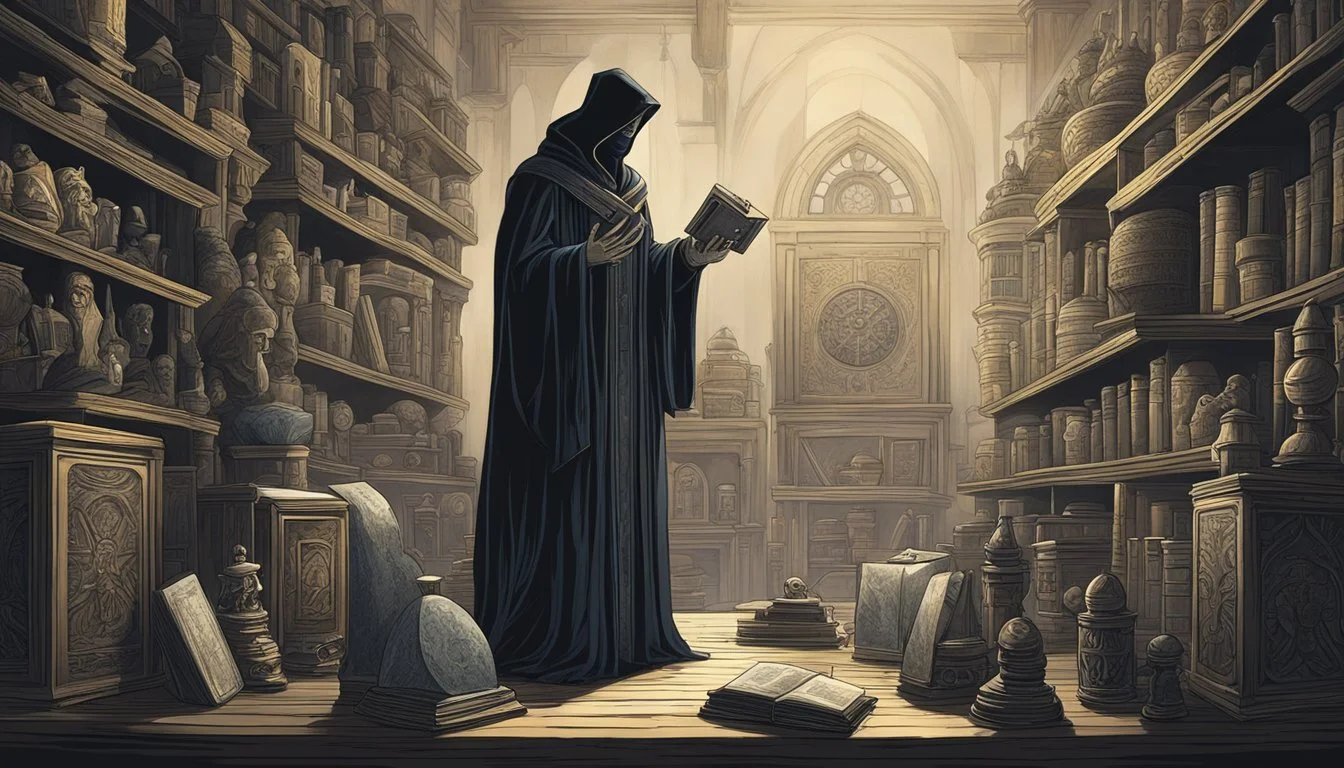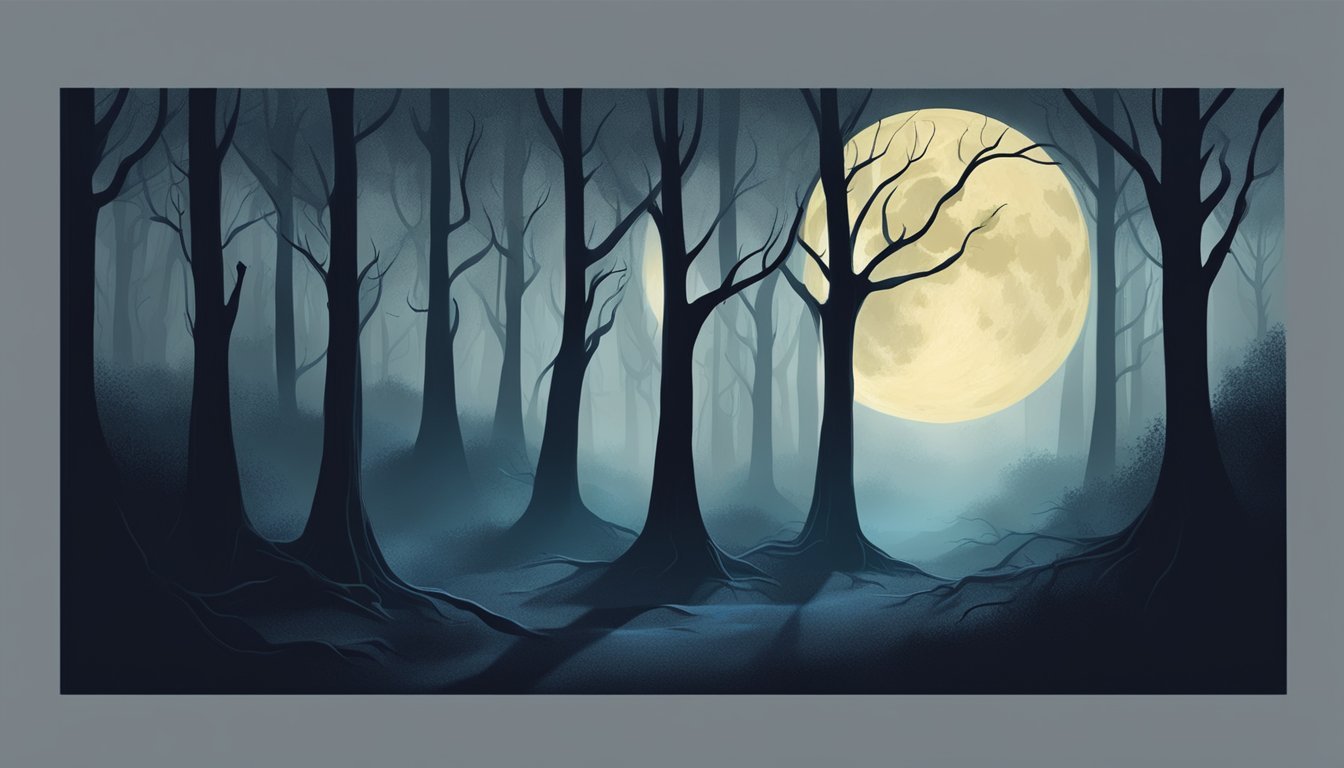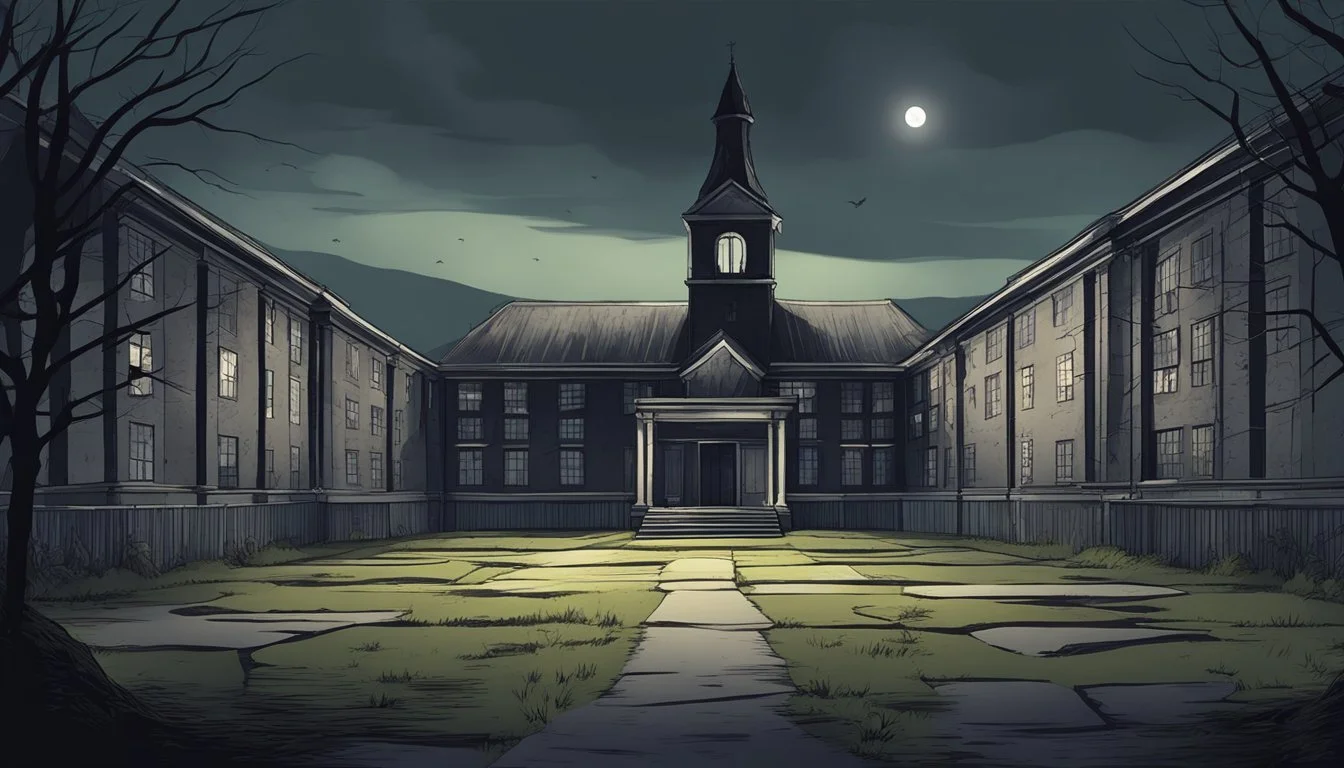Real Nightmares: How Documentary Horror Invades Your Reality
Documentary horror blends the raw authenticity of real-life footage with the spine-chilling elements of the horror genre. This unique subgenre explores true events, urban legends, and paranormal phenomena through a documentary lens, creating an unsettling viewing experience that blurs the line between fact and fiction.
Documentary horror films often leverage interviews, archival footage, and reenactments to craft narratives that feel disturbingly plausible. By grounding fantastical or terrifying concepts in a familiar documentary format, these productions tap into viewers' fears and challenge their perceptions of reality. The genre has gained traction in recent years, with filmmakers using innovative techniques to push the boundaries of traditional horror storytelling.
Beyond fictional narratives, documentaries about horror movies themselves offer fascinating insights into the genre's history, iconic characters, and cultural impact. These films delve into the making of classic horror franchises, explore the psychology behind our fascination with fear, and showcase the artistry involved in creating memorable scares. From examinations of the Nightmare on Elm Street series to explorations of the Child's Play franchise, these documentaries provide horror enthusiasts with a deeper appreciation for their favorite films and the creative minds behind them.
Origins and Evolution of Documentary Horror
Documentary horror emerged as a unique subgenre, blending factual storytelling with spine-chilling elements. This fusion created a new way to explore real-life terrors and supernatural phenomena through a documentary lens.
Historical Overview of the Horror Genre
The horror genre has roots in early cinema, with Georges Méliès' 1896 film "Le Manoir du Diable" considered one of the first horror movies. Silent films like "Nosferatu" (1922) established iconic monster tropes.
The 1930s brought Universal's classic monster films, while the 1950s saw sci-fi horror rise. Hammer Films revitalized gothic horror in the 1960s.
Slasher films dominated the 1970s and 1980s, followed by psychological thrillers in the 1990s. The 2000s introduced found footage horror, setting the stage for documentary-style approaches.
Rise of Documentary Horror
Documentary horror gained traction in the late 1990s and early 2000s. "The Blair Witch Project" (1999) pioneered the found footage format, blurring lines between fiction and reality.
TV shows like "Paranormal State" and "Ghost Hunters" popularized paranormal investigation formats. These programs used documentary techniques to explore supposedly real haunted locations.
Mockumentaries like "Lake Mungo" (2008) and "The Poughkeepsie Tapes" (2007) further developed the subgenre. They employed documentary styles to create unsettling, realistic horror narratives.
Influence of True Crime on the Horror Documentary
True crime's popularity significantly impacted horror documentaries. Series like "Making a Murderer" and "The Jinx" demonstrated the power of real-life horror stories.
Horror documentaries began incorporating true crime elements, exploring real murders and unsolved mysteries. "Cropsey" (2009) blended urban legend with actual criminal cases.
Podcasts like "Serial" influenced audio-focused horror docs. "Savageland" (2015) used crime scene photos and interviews to create a chilling narrative.
This fusion of true crime and horror documentary styles continues to evolve, offering audiences new ways to experience fear through factual and semi-factual storytelling.
Iconic Documentary Horror Films and Series
Documentary horror blends factual filmmaking with terrifying subject matter. Several standout works have pushed the boundaries of this niche genre, exploring real-life horrors and the dark side of human nature.
The Nightmare
"The Nightmare" explores the phenomenon of sleep paralysis through chilling reenactments. Director Rodney Ascher interviews eight people who suffer from this condition, bringing their nightmarish experiences to life on screen.
The film recreates vivid hallucinations described by the subjects, including shadowy figures and malevolent presences. These scenes blur the line between reality and nightmare, creating a deeply unsettling atmosphere.
Ascher's approach combines documentary interviews with horror movie techniques. This unique style immerses viewers in the terrifying world of sleep paralysis sufferers.
The Act of Killing
Joshua Oppenheimer's "The Act of Killing" documents the Indonesian genocide of 1965-66. The film focuses on former death squad leaders who proudly reenact their crimes.
Oppenheimer asks these men to create cinematic scenes based on their memories of the killings. The result is a surreal and disturbing look into the minds of mass murderers.
The film's power comes from its unflinching portrayal of evil. By allowing the perpetrators to tell their own stories, it reveals the horror of how they view their actions.
Cursed Films
Shudder's "Cursed Films" series investigates allegedly haunted movie productions. Each episode focuses on a different film, exploring the tragedies and strange occurrences surrounding its creation.
The series covers infamous cases like "The Exorcist" and "Poltergeist." It features interviews with cast and crew members, as well as paranormal experts and skeptics.
"Cursed Films" examines the thin line between coincidence and the supernatural. It delves into the power of belief and how urban legends can take on a life of their own in Hollywood.
Renowned Figures in Horror
Horror cinema has been shaped by visionary directors, writers, and documentarians. These influential figures have left an indelible mark on the genre through their groundbreaking works and unique perspectives.
Masterminds of Horror: Carpenter and Craven
John Carpenter revolutionized horror with his 1978 slasher classic "Halloween." His innovative use of POV shots and minimalist score created a new template for terror. Carpenter's other notable works include "The Thing" and "They Live."
Wes Craven brought psychological depth to horror. His "A Nightmare on Elm Street" introduced the iconic Freddy Krueger, while "Scream" revitalized the genre with its meta-commentary. Craven's films often explored the blurred lines between reality and nightmares.
Both directors pushed boundaries and challenged conventions, inspiring generations of filmmakers. Their impact extends beyond horror, influencing cinema as a whole.
Legacies of Stephen King
Stephen King's prolific writing career has spawned numerous film adaptations. His stories blend relatable characters with supernatural horrors, creating enduring tales of terror.
Key King adaptations include:
"The Shining" (1980)
"Carrie" (1976)
"Misery" (1990)
"It" (2017)
King's influence reaches beyond literature. His works have shaped pop culture and redefined horror storytelling. Many of his novels explore themes of childhood trauma and small-town secrets.
King's collaborative efforts with filmmakers have resulted in some of horror's most memorable moments. His storytelling continues to captivate audiences across various media.
Prominent Horror Documentary Filmmakers
Eli Roth stands out as a leading figure in horror documentaries. His series "Eli Roth's History of Horror" offers in-depth explorations of the genre. Roth interviews key horror figures, including Stephen King and Jordan Peele.
Other notable horror documentarians include:
Adam Simon ("The American Nightmare")
Andrew Monument ("Nightmares in Red, White and Blue")
These filmmakers provide crucial insights into horror's evolution. Their work examines the cultural impact of scary movies and the creative processes behind them.
Horror documentaries often feature interviews with directors, actors, and effects artists. They offer fans a deeper appreciation of the craft and artistry behind their favorite films.
The Craft of Documentary Horror
Documentary horror blends investigative journalism with filmmaking techniques to create compelling, fact-based narratives that unsettle viewers. This unique genre requires a careful balance of journalistic integrity and cinematic storytelling.
Techniques in Horror Filmmaking
Documentary horror employs various filmmaking techniques to build tension and evoke fear. Directors often use low-angle shots to make subjects appear more imposing. Eerie background music and sound effects heighten the atmosphere of dread. Quick cuts and jarring edits can startle viewers, mimicking jump scares found in fictional horror films.
Lighting plays a crucial role in setting the mood. Dimly lit interviews and shadowy reenactments create a sense of unease. Filmmakers may use handheld cameras during intense moments to increase the feeling of instability and danger.
Investigative Journalism in Documentary Horror
Investigative journalists form the backbone of documentary horror. They conduct advanced title searches to uncover hidden stories and dig deep into historical records. These professionals interview witnesses, experts, and sometimes even perpetrators to piece together complex narratives.
Fact-checking is paramount in documentary horror. Journalists must verify all claims and present evidence to support their findings. They often face challenges accessing sensitive information or convincing reluctant sources to speak on camera.
Documentary horror journalists must balance ethical considerations with storytelling needs. They aim to present truthful, compelling accounts without exploiting victims or sensationalizing events.
Subject Matter in Documentary Horror
Documentary horror explores real-life terrors and unexplained phenomena. It delves into supernatural occurrences, true crime cases, and mysterious incidents that blur the line between fact and fiction.
Exploring Supernatural Themes
Supernatural documentaries investigate ghostly encounters, demonic possessions, and other paranormal activities. They often feature interviews with eyewitnesses and paranormal investigators. These films use eerie footage, audio recordings, and reenactments to create a chilling atmosphere.
Some documentaries explore haunted locations, like abandoned asylums or ancient burial grounds. Others focus on specific supernatural entities or phenomena, such as poltergeists or doppelgangers.
Experts in the field, including psychics and demonologists, often provide their insights. Their testimonies add credibility and depth to the supernatural claims presented in these documentaries.
True Stories of Serial Killers
Serial killer documentaries examine the lives and crimes of real-life murderers. They often include interviews with investigators, survivors, and sometimes the killers themselves. These films analyze the psychological profiles and motivations behind heinous acts.
One notable case is that of Israel Keyes, a methodical killer who traveled across the United States to commit his crimes. Documentaries about Keyes highlight his meticulous planning and the challenges faced by law enforcement in tracking him down.
These films often recreate crime scenes and use archival footage to illustrate the killers' methods. They may also explore the impact on victims' families and communities affected by these crimes.
Documenting Paranormal and UFO Incidents
UFO documentaries investigate reported sightings and alleged encounters with extraterrestrial life. They often feature eyewitness accounts, declassified government documents, and expert analysis of photographic or video evidence.
Some films focus on specific incidents, like the Roswell crash or the Phoenix Lights. Others take a broader approach, examining patterns of UFO sightings across different regions or time periods.
These documentaries may include interviews with former military personnel, scientists, and ufologists. They often explore theories about government cover-ups and the potential implications of extraterrestrial contact for humanity.
Cultural Impact of the Horror Documentary
Horror documentaries have significantly influenced public perception of the genre and contributed to its evolution. These films provide unique insights into the creation and cultural significance of horror cinema.
Public Perception and Reception
Horror documentaries have reshaped audience understanding of the genre. They reveal the artistry and deeper meanings behind horror films, challenging stereotypes of the genre as mere shock value entertainment. These documentaries often highlight the social commentary embedded in horror movies, elevating their status in popular culture.
Films like "Abducted in Plain Sight" have sparked intense public discussions about real-life horrors. Such documentaries blur the lines between reality and fiction, intensifying the emotional impact on viewers.
Contribution to Horror and Documentary Genres
Horror documentaries have expanded the boundaries of both horror and documentary filmmaking. They've introduced innovative storytelling techniques, merging factual presentation with elements of suspense and dread.
These films often explore the production processes behind iconic horror movies, inspiring new generations of filmmakers. By analyzing horror's evolution, they've helped identify trends and influences in the genre.
Horror documentaries have also pushed documentary filmmaking into new territories, experimenting with mood and atmosphere to enhance their narratives. This cross-pollination has resulted in more engaging and immersive documentary experiences.
Psychological Effects of Documentary Horror
Documentary horror taps into deep-seated fears by blending real-world elements with supernatural terrors. This genre uniquely impacts viewers' psyches through its portrayal of supposedly true events and phenomena.
Sleep Paralysis Depictions
Sleep paralysis, a terrifying but natural occurrence, features prominently in documentary horror. Films like "The Nightmare" recreate visceral experiences of sleep paralysis sufferers. These depictions can trigger anxiety in viewers, especially those prone to the condition.
Realistic portrayals of shadowy figures and crushing sensations mirror actual sleep paralysis episodes. This authenticity heightens emotional responses, potentially leading to increased fear of sleep or bedtime rituals.
Some viewers report temporary sleep disturbances after watching such documentaries. Others find comfort in learning about shared experiences, reducing feelings of isolation associated with sleep paralysis.
The Horror of Realism
Documentary horror's power lies in its ability to blur the line between fact and fiction. "Pennywise: The Story of IT" explores the real-world inspirations behind Stephen King's iconic clown.
This approach grounds fictional terrors in reality, making them feel more plausible and immediate. Viewers may experience heightened anxiety about everyday situations or locations featured in these films.
The genre can also desensitize audiences to real-world horrors by presenting them alongside fictional elements. This blending effect may lead to skepticism about genuine threats or diminished empathy for actual victims.
Some viewers report increased paranoia or hypervigilance after exposure to documentary horror. Others find the genre cathartic, allowing them to confront fears in a controlled environment.
Notable Horror Documentary Series and Films
Horror documentaries provide fascinating behind-the-scenes looks at iconic franchises and explore real-life inspirations for terrifying films. These series and films offer deep dives into the making of classic horror movies and examine unexpected sources of fear in nature.
Crystal Lake Memories Series
"Crystal Lake Memories: The Complete History of Friday the 13th" is an exhaustive documentary series exploring the Friday the 13th franchise. Released in 2013, it spans nearly 7 hours and covers all 12 films in the series up to that point. The documentary features interviews with over 150 cast and crew members, including directors, writers, and special effects artists.
Key topics include:
Origins of the franchise
Behind-the-scenes stories from each film
Evolution of Jason Voorhees as a character
Impact on the slasher genre
Fans praise its comprehensive approach and wealth of rare footage and photos.
Never Sleep Again Series
"Never Sleep Again: The Elm Street Legacy" is a four-hour documentary released in 2010 focusing on the A Nightmare on Elm Street franchise. It covers the entire series, from the 1984 original through Freddy vs. Jason in 2003.
The documentary features:
Interviews with Wes Craven, Robert Englund, and other key figures
Detailed looks at special effects and makeup
Examination of Freddy Krueger's cultural impact
Analysis of themes and symbolism in the films
It's renowned for its depth and insightful commentary on the franchise's legacy.
Spotlight on Killer Whales in Horror
While not a specific documentary series, killer whales have appeared in several horror films and documentaries exploring marine predators. These productions often blend factual information about orca behavior with dramatized depictions of attacks.
Key aspects include:
Examination of real-life orca encounters
Analysis of orcas in films like "Orca" (1977)
Discussion of orca intelligence and social structures
Debate over keeping orcas in captivity
These documentaries often raise questions about human-animal interactions and the line between fact and fiction in horror.







